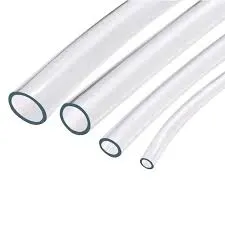Eki . 13, 2024 10:58 Back to list
HDPE Pipe Fittings for Efficient Plumbing Solutions and Installation Techniques
Understanding HDPE Pipe Fittings A Comprehensive Overview
High-Density Polyethylene (HDPE) pipe fittings have become a significant component in various applications due to their unique properties and advantages. As industries transition towards more sustainable materials, HDPE fittings offer an innovative solution for managing fluid transfer in a range of environments including agricultural, industrial, and municipal settings. This article explores the characteristics, benefits, and applications of HDPE pipe fittings, providing a comprehensive overview of why they are widely favored in modern piping systems.
Characteristics of HDPE Pipe Fittings
HDPE is a thermoplastic made from petroleum. It is renowned for its high strength-to-density ratio, making it robust yet lightweight. One of the defining properties of HDPE pipe fittings is their resistance to a wide array of chemicals. This characteristic ensures longevity and reliability in systems where corrosive substances may be present. Furthermore, HDPE fittings boast a low thermal conductivity, which minimizes heat loss or gain and contributes to energy efficiency in pipe systems.
Another critical attribute of HDPE is its flexibility. This property allows for easier installation in various configurations, reducing the need for additional fittings and connections. HDPE pipe fittings can withstand higher temperatures and pressures than traditional materials, making them suitable for a variety of applications, including water supply systems, sewage systems, and gas distribution.
Benefits of HDPE Pipe Fittings
The advantages of using HDPE pipe fittings extend beyond their physical properties. One significant benefit is their resistance to environmental stress cracking. This resistance ensures that the fittings maintain integrity under various stress conditions, which is especially important in outdoor applications where temperature fluctuations can lead to contraction and expansion.
Maintenance is another area where HDPE pipes excel. They don’t require regular maintenance like metal pipes, which can corrode over time. Additionally, HDPE pipe fittings provide leak-free joints when properly fused, reducing the risk of leaks that can plague other materials.
hdpe pipe fitting

Cost-effectiveness is also a primary consideration. Although the initial investment may be higher than other options, the durability, low maintenance costs, and extended lifespan of HDPE fittings typically result in lower total cost of ownership over time. This makes HDPE fittings a smart choice for long-term projects, particularly in municipal systems where lifespan and maintenance efficiencies are crucial.
Applications of HDPE Pipe Fittings
HDPE pipe fittings are incredibly versatile and are utilized in various domains. In the agricultural sector, they are commonly used for irrigation systems, allowing for efficient water management. The lightweight design of HDPE makes it easier to transport and install, crucial for scalable agricultural practices.
In municipal applications, HDPE fittings are used extensively in water distribution systems as well as wastewater management. Their durability and resistance to corrosion ensure that they can handle the demands of urban infrastructure without frequent replacements.
Industrial applications have also seen a surge in the use of HDPE fittings, particularly in chemical processing. Their capacity to resist a wide range of chemicals facilitates safe and efficient transport of substances that might degrade or corrode other materials.
Conclusion
As the demand for durable, efficient, and cost-effective solutions increases, HDPE pipe fittings stand out as a premier choice across various industries. Their unique combination of strength, resistance to chemicals, and flexibility make them ideal for fluid management systems in agriculture, municipal services, and industry. While transitioning to HDPE from traditional materials may involve an upfront investment, the long-term benefits—ranging from reduced maintenance costs to extended service life—far outweigh the initial costs. Thus, embracing HDPE technology is not only a commitment to quality and efficiency but also to sustainable practices in infrastructure development. The future of piping systems leans heavily toward materials like HDPE, which promise resilience and sustainability in an ever-evolving industrial landscape.
-
Durable Glossy PVC Rigid Sheet | Premium High-Shine Panels
NewsAug.26,2025
-
Durable PP Rigid Sheet: Lightweight, Chemical Resistant Solutions
NewsAug.21,2025
-
PVC Grey Sheet for Extraction: Chemical Resistant & Durable
NewsAug.19,2025
-
Durable PVC Pipe Fittings for Plumbing & Irrigation Needs
NewsAug.18,2025
-
HDPE Steel Belt Reinforced Spiral Corrugated Pipe | High Strength
NewsAug.17,2025
-
HDPE Pipe Fittings: Durable, Leak-Proof Solutions
NewsAug.16,2025

